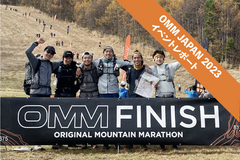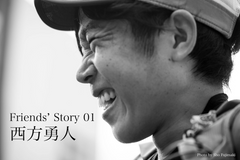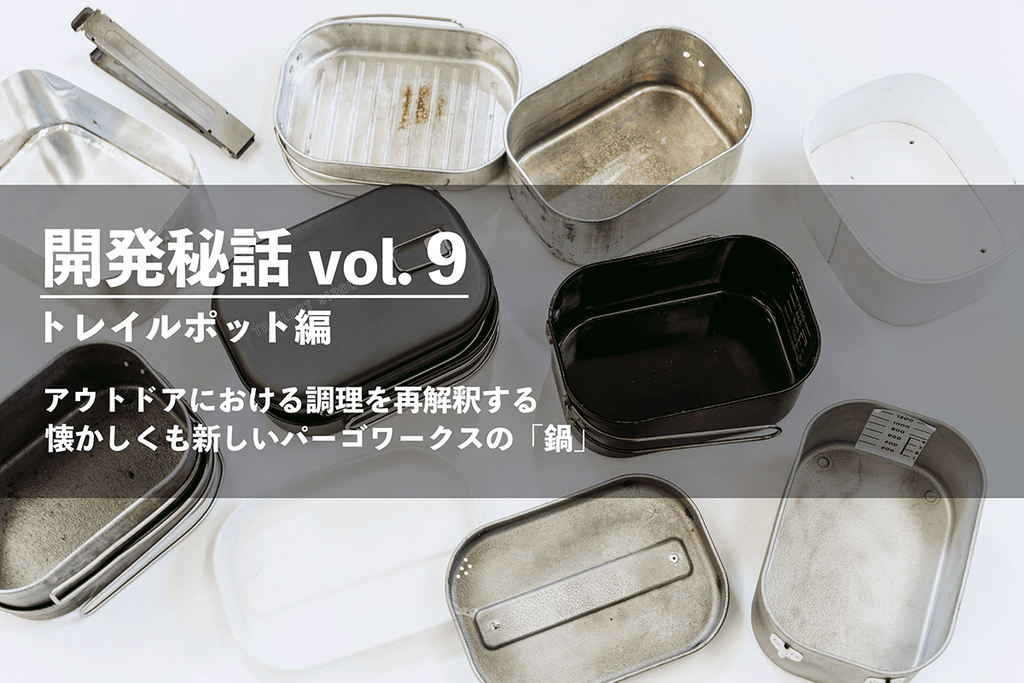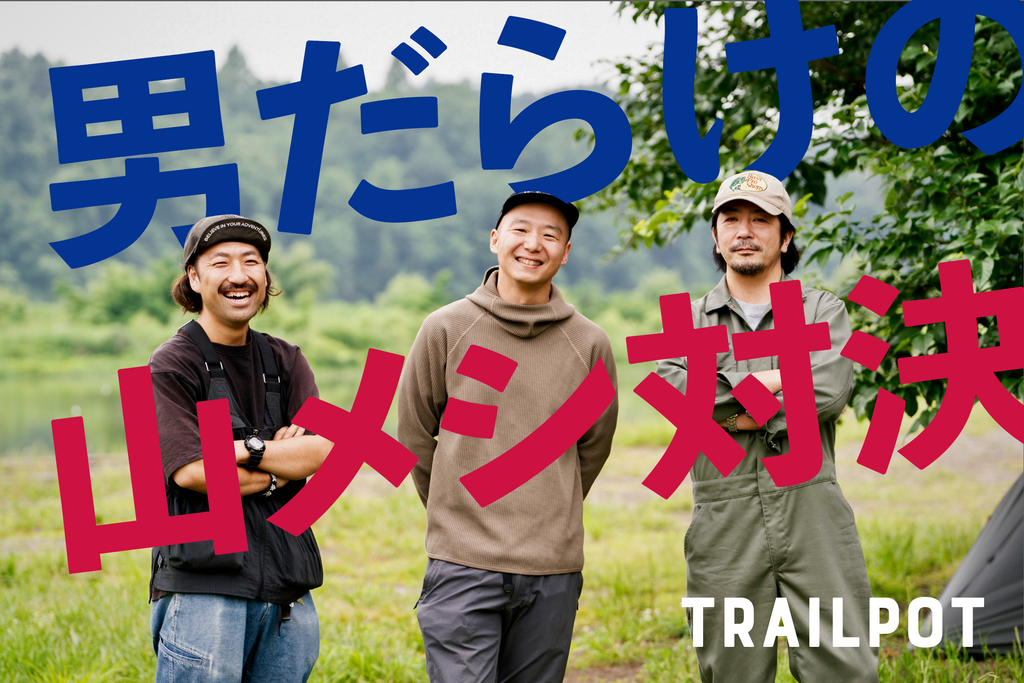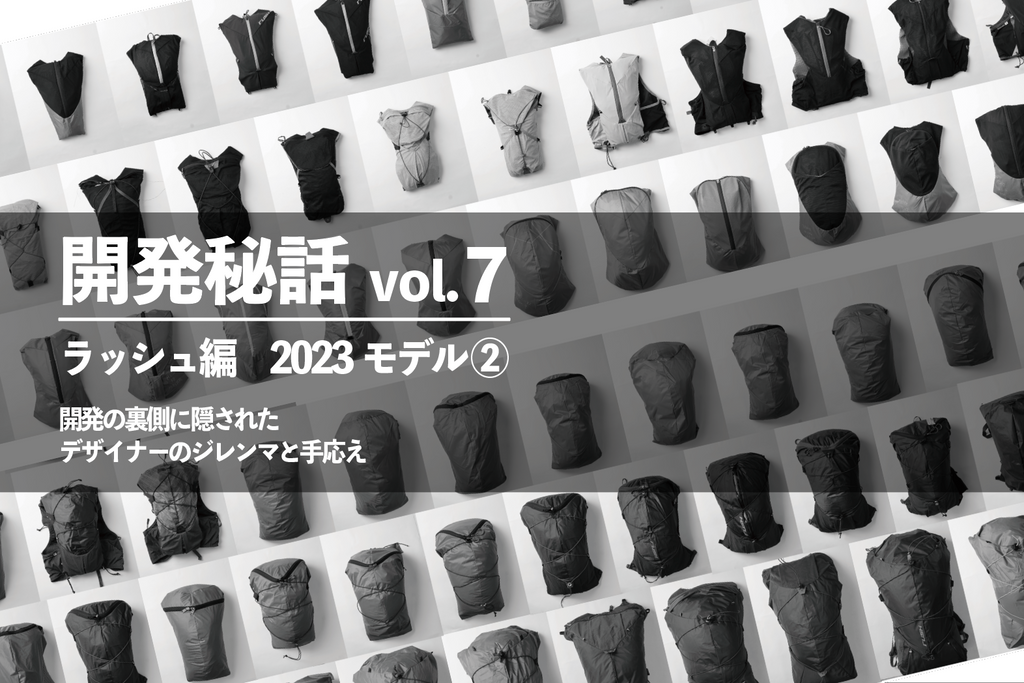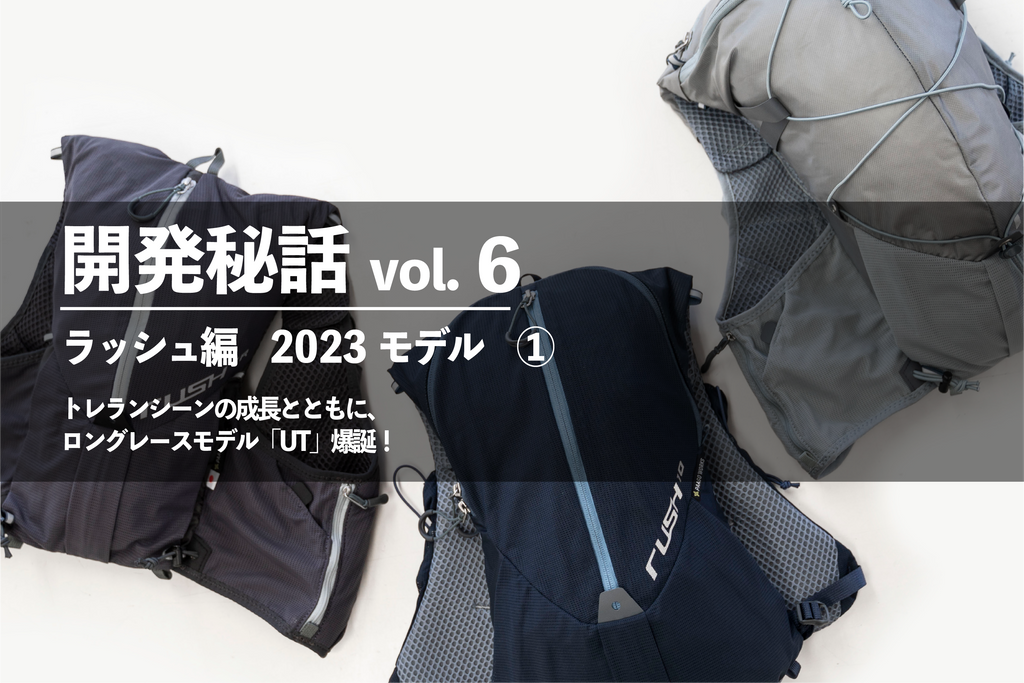MAGAZINE

Product History vol.8 Rush 2023 Edition (Part 3)
"New Rush" with improved resolution based on user feedback
The "Rush" series underwent a full model change in 2023. Starting with the original "Rush", we have been following its history, bringing you the development secrets of the model, including the racing model "UT". Last time, we explained each model of the "new Rush", but there is still much more to tell. We would like to delve into the maniacal details that only a designer can talk about.

— As the designer who developed the product, what were the key points you focused on when redesigning the Rush? The appearance has been preserved as the Rush has always been, but the actual usability has been greatly improved, and it has been well received by runners.
Looking back at the development of the Rush, I would like to talk about the design of the harness. It is an important part of a trail running pack that determines the fit and functionality, so not only Paago Works, but each company has their own unique approach to it.
There's no end to the details, but one of the most important elements is how to design the cord and adjuster. For the vest-type lace model, the cord for adjusting the length was horizontal on the early models. This was the structure for adjusting the fit of the waist, but the new model has an adjuster and the fulcrum position is raised.


The reason for this is that we wanted the pockets to be usable even when the cord was tightened. For people with small waists, the capacity is reduced by tightening the cord. Even though it can't be helped that the capacity is reduced, we wanted to maintain the ease of use of the pockets when the cord was pulled.
By changing the fulcrum, the load direction is directed from the shoulder to the waist, allowing for smooth adjustment and a better fit. Also, by placing the adjuster at the back, we were able to lengthen the zipper. About 2 cm. At the same time, we also considered the ease of use of the garbage pocket. In some cases, the garbage pocket would fall out when the cord was tightened, so we narrowed the opening.

So, in order to solve several issues at the same time, we made so many prototypes of the harness. We had no choice but to actually make and test this harness. Users can't tell at first glance. But I think this is the core of the renewal of the race model. It's much easier to use, so runners may have already noticed it.

— The design of the harness pocket has changed significantly for the race model. I'm sure there was input from top runners who use "UT", but what was the process behind developing it?
During the race, I was constantly simulating what I would use while running. I divided it into five categories: supplements, water, energy, food, and trash. I named it "SWEPT" (laughs), but it's quite deep. The number of gels you use also changes depending on the length of the race. For a long race, five gels and 1L of water on each side. How to put them in, how often to use them, etc.

Water is not dispensed every time you drink it. However, you should replace it when you finish drinking it. In a long race, you should be able to change it about three times. In a short race, you may not be able to drink water at the aid station. A smartphone is a must-have, but it is often not taken out during the race. I considered not only portability but also frequency of use when thinking about the layout of the pockets.

If I have one idea, I make about 5 to 10 prototypes. This time, I actually focused on smartphones. There was a need to make a place where a smartphone can be properly stored. But bottles and smartphones don't go well together. They're cylindrical and flat. There are also wet things and electronic devices, so I don't want to put them in the same place.
Smartphones are getting bigger and bigger, and depending on the model, there was an issue of them not fitting into the existing pockets. In the end, we settled on the inside of the harness. Paago was the first in the world to come up with the idea of putting a pocket for smartphones on the inside. Also, considering the compatibility with bottles, we thought we would try putting a flat pocket on the inside. It turned out to be quite good. It was able to fit a smartphone while maintaining the ease of use that was typical of Rush. The regular model is in a pocket on the outside of the harness. The capacity is larger so it doesn't interfere with the bottle, and it has a fold-over to minimize the risk of it falling out.

— The bag has more pockets and other features, but have you lost anything?
One of the things we wanted for the pockets was to prevent items from falling out. We added a fold at the opening and a shock cord, and tested many prototypes, but as a result we decided to eliminate the traditional flat elastic and adopt a new design.

By the way, the length of the shoulder harness can be adjusted for models other than the Rush 30, so the range of fitting has been expanded. It fits most runners, whether they are petite women or well-built men.

And the overall storage capacity has been increased. In particular, the vest type has increased the number of pockets from eight to 12. The regular model backpack type also now has three pockets. What's more, while the bottom pocket was for bottles and the top for smartphones, the new design allows bottles to go on top.
This allows flasks to be stored at a higher position, improving practicality. In addition, a gusset has been added to the bottom, making it easy to store snacks and small items even when a bottle is inside. This design was based on the advice of rush runners Wakaoka and Ohata. Incidentally, the reason for fixing the chest belt is that most people in the survey said they "don't adjust the height."

--You use the tagline "designed by the runners." Why did you choose to say that it is the runners who are the designers, rather than that you, the developers, are the designers?
The "New Rush" is a product born from the voices of runners. At first, I thought about "design for...", but I thought it didn't feel right. I had a lot of difficulties in the development, but I felt that this was the hardship of being a spokesperson for all the runners, and I thought that it was my role to take their thoughts and make them a reality. Since we developed it based on the voices of runners saying things like "It would be nice if there was something like this" and "It would be nice if it was like this", I think that the runners are the designers.
The reason why I use the plural "runners" is to give back to the fans surrounding Paago. It's because I feel that it was made by you runners. It's not my work, it's everyone's work.
That's why we want lots of runners to use our products, and we want to hear more opinions. If you see them somewhere, we want you to say hello, and we want to say hello to you too. That's the kind of manufacturer we want Paago Works to be. In that sense, Rush is one of the culminations of that.

-When you released "Rush," you held an event called "MEET NEW RUSH" with trail running communities across the country. What was the thinking behind this?
I've said before that development is "product communication," and I want to have two-way communication between users and manufacturers through the product. The idea is that the exchange of feedback between the product and the product will lead to better products. "MEET NEW RUSH" is the most direct way to achieve this.
There are many interesting local communities all over the country, and we have "Rush Runners" who act as ambassadors for Paago Works. We call them KOLs (Key Opinion Leaders), and they are important colleagues who represent the voices of our users and also play a role in spreading our products.


I want to create products that are born from "product communication." I think this is something that I have to continue doing as a brand.
In terms of future prospects, I would like to incorporate this development method into other products. I would like to use the same method with other items, such as hikes. It is our mission to communicate what we are thinking and what we are making. So, it is natural for people to experience our new products. I am looking forward to the connections that will be born from that.

— Would you say this latest rush is the "final version"?
This model change was a major overhaul that took two years to complete. We went back and forth on the design many times, remaking it based on user surveys and the opinions of testers and ambassadors. The pile of samples just kept growing. After making 150 samples, when we were all done and submitted the patterns to the factory, we vowed, "This is the final version! We've done it." and "We'll never do such troublesome development again."
But I think I ended up changing it about three times. The very last time was when it was on the sewing line for mass production. In reality, changing the pattern in the middle of the production line is not allowed, and it's a big nuisance for the factory. But I couldn't compromise, so I made the vest-shaped bottle pocket just 2cm deeper. I had a tester try the pre-raised sample (a sample to check the final specifications before mass production) and he was a little worried about the bottle popping out. So I and the Paago staff tested it, and I thought that this was something that couldn't be overlooked. I flew to Vietnam where the product was being produced and negotiated directly with the factory. They changed the cut of the pocket at the last minute.
This Rush did its best "for now." That's something I can say for sure. But as time goes on, the way we play changes, and the attributes of our users change, the needs for our equipment will inevitably change. I'm a designer, so when I meet users at the race venue and hear the opinions of our ambassadors, I get more and more motivated to create. Even though it was so hard to create, I think it was fun after all. So Rush will never be complete. I think it will continue to evolve.
